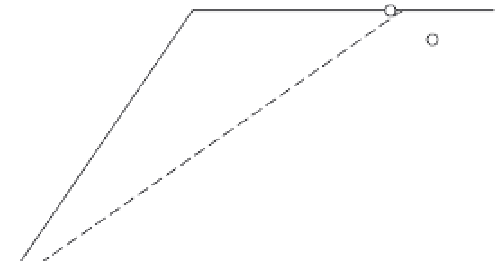Biomedical Engineering Reference
In-Depth Information
120
100
80
60
40
HF cells
NR6 cells
(WT EGFR)
20
0
0
2000
4000
Surface complexes (Cs)
6000
8000
FIGURE 6.19
Relationship between steady-state surface complexes and mitogenic response to EGF for NR6
cells (
) and human fibroblasts (
).
Data from [7].
○
●
and therefore Eq. (6.12) can be written as
R
tot
¼½
G
:
R
K
a
þ
K
a
½
G
½
G
þ½
G
:
R
¼½
G
:
R
1
ð
6
:
13
Þ
or
ð½
G
:
R
=
R
tot
Þ¼½
G
=ð½
G
þ
K
a
Þ
ð
6
:
14
Þ
Receptor occupancy rates ([G:R]/R
tot
) need to be on the order of 0.25 to 0.5 to reach a
significant stimulation (Figure 6.19), and therefore growth factor concentrations as low as
10 pM are sufficient to generate cellular response.
In many cases, the receptor:ligand complex is internalized, and a typical time constant
for internalization is 15 to 30 minutes. The absolute values for growth factor uptake rates
have been measured. For instance, interleukin-3 (IL-3) and the stem cell factor (SCF) are
consumed by immature hematopoietic cells at rates of about 10 and 100 ng per million cells
per day. Further, it has been shown that 10,000 to 70,000 growth factor molecules need to
be consumed to stimulate cell division in complex cell cultures.
EXAMPLE PROBLEM 6.3
How far can soluble signals propagate and how long does it take?
Solution
The maximum signaling distance can be estimated from a simple diffusion model that
describes secretion from a sphere. Under steady-state conditions, it can be shown that the concen-
tration of a secreted molecule as a function of the distance from the cell is described as
2
a ¼
ð
R
=
D
Þ
ð
K
a
R
=
F
Þ
K
a
¼ a
R
c
where
ð
6
:
15
Þ
r










































